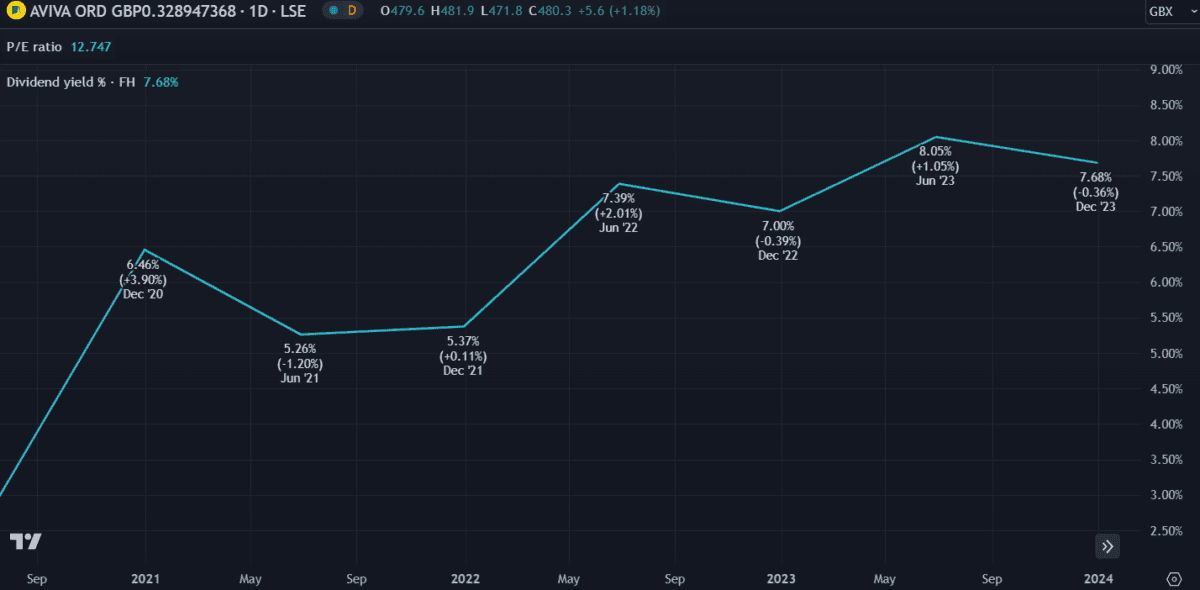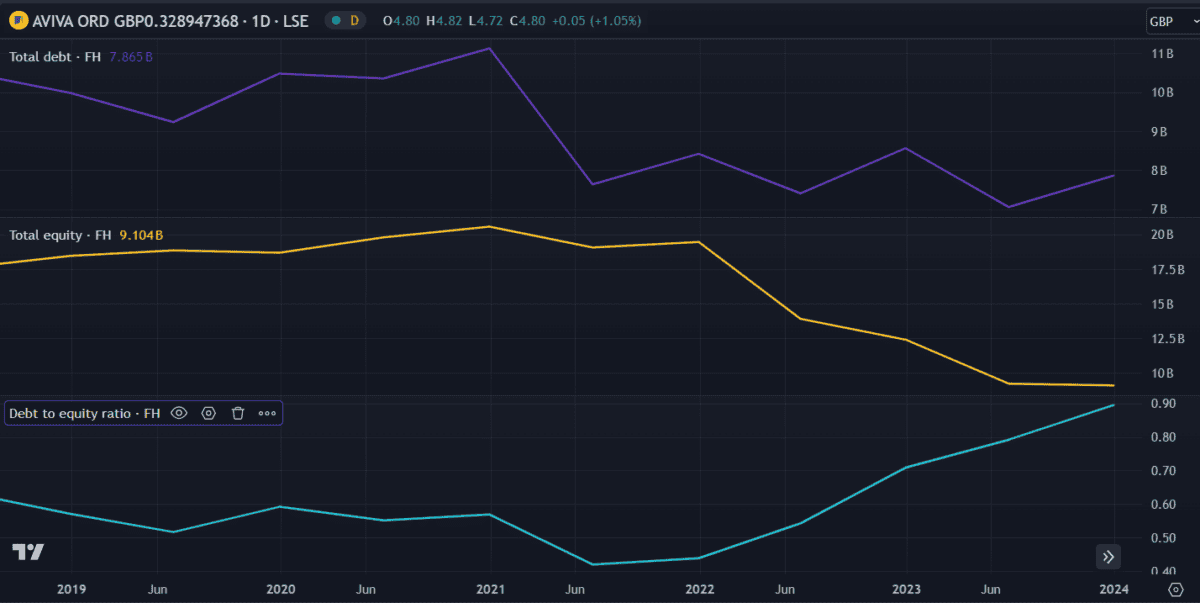After a powerful first quarter, Aviva (LSE: AV.) share price is down 4.7% from this year’s high. However, it has outperformed the Footsie over the past year and is now close to a seven-year high.
Shares are trading at £4.73, down slightly from their May high of £4.97.
What direction will stocks head?
To find out, I present charts of key growth metrics that can reveal hidden clues.
Price to Earnings
I always check the price-to-earnings (P/E) ratio first to get a abrasive idea of value. If the price is significantly higher than earnings, the stock may be overvalued, which will limit further growth. However, a low P/E suggests that the price has not yet caught up with earnings and more growth is expected.
The current average P/E ratio in the UK market is 18.4, which is close to the highest it has been in several years. Aviva’s P/E ratio of 12.7 is relatively low, suggesting the stock has decent growth potential.
Dividend yield
One of Aviva’s key value propositions is that it is a well-known dividend payer. The ability to return some profits to shareholders is a powerful indicator that the company is doing well. Over the past two decades, it has paid a fluctuating annual dividend of between 15p and 30p a share. Overall, growth has not been great, but payouts have been steady.
The dividend yield indicates what percentage of the current share price is paid out each year. It currently stands at 7.68%, and the chart shows that it has been steadily increasing since 2021. It is currently the seventh highest dividend yield on FTSE100 — although slightly below the competition Legal and general informationin fifth place.

Debt
Debt can be very useful for a business if used correctly. In fact, it is considered a key part of any successful business. However, when it is used as a lifeline, it can become a problem. The chart below shows three significant ratios: debt, equity, and debt to equity ratio (D/E). We can see that debt is decreasing, which is good. However, equity is decreasing at a faster rate, leading to an enhance in the D/E ratio.

The D/E ratio should ideally remain below one. With Aviva’s ratio currently at 0.9, it’s dangerously close to a situation where debt exceeds equity. That’s a worrying situation. If a company doesn’t have enough equity or cash flow to cover its debt, it could default – or, in the worst case, go bankrupt.
Fortunately, Aviva has plenty of cash and assets, so this is not a risk for now.
My verdict
Given the above metrics, Aviva’s share price still seems inexpensive to me. This is reflected in the P/E ratio and supported by future earnings estimates that calculate the shares will trade 42% below fair value. But that doesn’t mean they’ll go up.
The UK insurance market is cutthroat, and Aviva faces a number of rivals. If the recovery is delayed, consumers may seek cheaper alternatives, threatening profits. With equity falling and debt rising, it cannot afford to lose customers at this crucial time.
On paper, everything looks good and I think the stock price could improve. But I wouldn’t expect a huge enhance. Fortunately, the high dividend yield gives the stock great value both ways.
